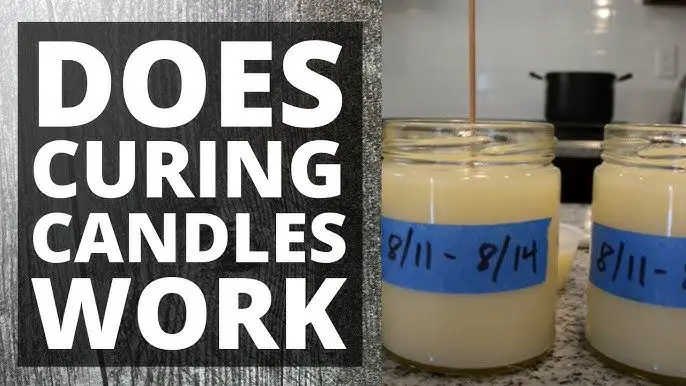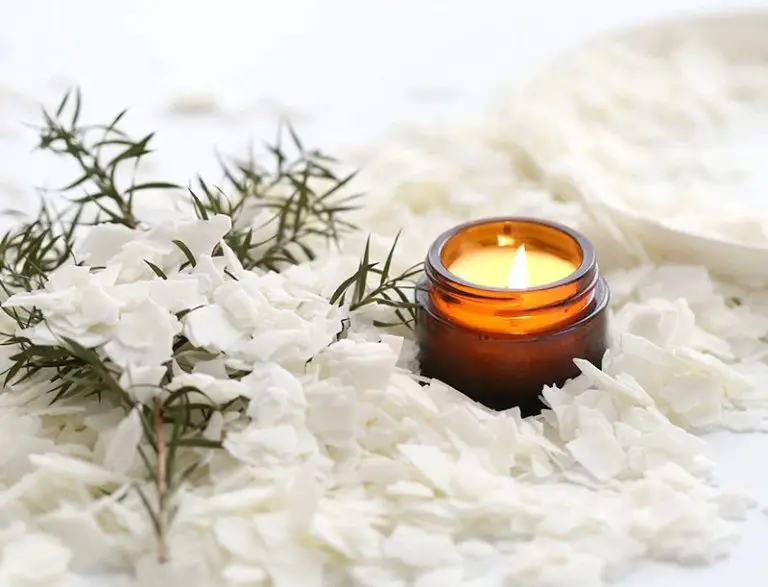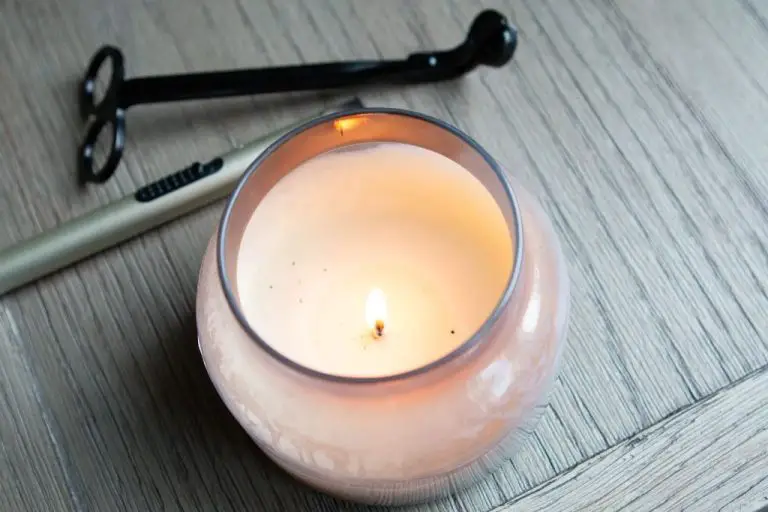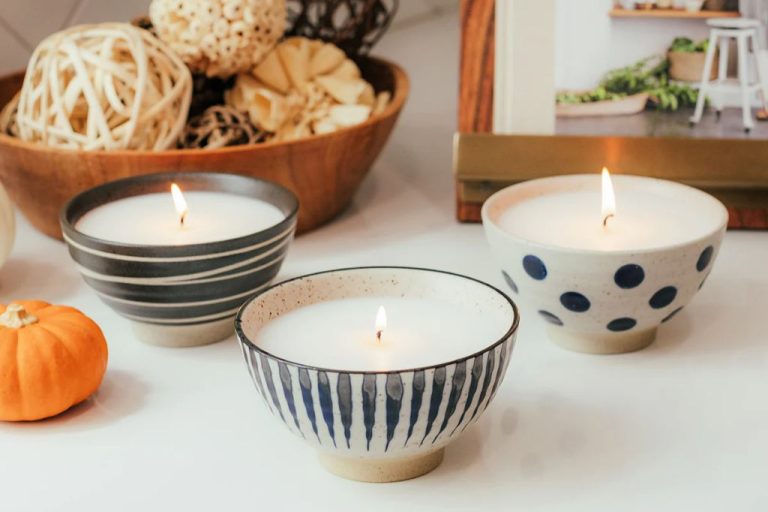Which Candle Wax Is Best For Fragrance?
Candles have been used for centuries to create pleasant scents and ambiance in homes. The type of wax used in candles plays a critical role in how well the candle releases fragrance. When selecting candle wax, it’s important to consider factors like scent throw, burn time, melting point, and sustainability.
This article compares the most common types of candle wax – paraffin, soy wax, beeswax, gel wax, coconut wax, and palm wax – to determine which performs best for fragrance diffusion. After evaluating the pros and cons of each wax, research indicates that soy wax may be the best option for candles where fragrance is the priority.
Paraffin Wax
Paraffin wax is the most commonly used candle wax. It is derived from petroleum and is a byproduct of oil refining. Paraffin wax is highly refined and purified, making it odorless and colorless (1).
Paraffin wax has several pros for fragrance retention. It has an excellent ability to hold and disperse fragrance oils. The wax melts at a low temperature, which allows the fragrance to release steadily as the candle burns. This provides a strong, consistent scent throw. Paraffin’s high oil content also helps anchor fragrances (2). Types of fragrances that work best with paraffin wax include floral, fruity, gourmand, and lighter fragrances.
The drawbacks of paraffin for fragrance is that it can cause fragrance fading over time, especially with fragrances that contain high amounts of top notes. The hot candle wax pool created during burning can also cause some fragrance notes to evaporate too quickly (2).
(1) https://hobbydocbox.com/Candle_and_Soap_Making/68308886-Innovative-products-raw-materials-for-the-candle-industry.html
(2) https://www.candlescience.com/learning/what-is-the-best-candle-wax/
Soy Wax
Soy wax is made from hydrogenated soybean oil. It is a clean burning, natural wax made from a renewable resource. Soy wax has become very popular for candles because it holds scent very well and has a lower melting point than paraffin wax, making it ideal for containers.
The pros of soy wax for fragrance is that it has excellent scent throw and retention. Soy wax can hold high fragrance loads between 8-12% without additives. The large crystal structure of soy wax gives more space for fragrance oils to be retained ([1]). Soy wax also lets you use less expensive fragrance oils to get a strong scent.
The main con is that soy wax requires a longer cure time than paraffin, usually 1-2 weeks, for maximum scent throw as the wax fully saturates with the fragrance oil ([1]). It also doesn’t adhere as well to dyes.
Soy wax works best with lighter fragrances like fruity, floral, and light bakery scents. It’s not as suitable for heavier fragrances like musk or patchouli.
[1] https://www.theflamingcandle.com/how-can-i-get-a-strong-scent-throw/

Beeswax
Beeswax is a natural wax produced by honey bees. It has a sweet, honey-like scent and a bright yellow color. Beeswax contains vitamins A and E as well as fatty acids, making it nourishing for skin. It has a high melting point around 145°F (62°C) which means it retains scent and shape well (FlyTinBottle).
The pros of beeswax for candlemaking are that it has excellent scent retention and burn properties. Beeswax burns slowly and cleanly without producing smoke or residue. The naturally sweet scent also complements many fragrance oils. According to CandleScience, beeswax can hold 6-10% fragrance oil without issues. However, beeswax can be prone to frosting or mottling on the candle surface. It also needs to be blended with other waxes to improve pliability and reduce brittleness.
The best fragrances to pair with beeswax are lighter, floral scents like jasmine and rose. Fragrances with subtle sweet notes also complement the mild, honey-like scent of beeswax. Strong fragrances can overpower beeswax so lighter scents allow its natural aroma to shine.
Gel Wax
Gel wax is a type of candle wax that has a smooth, thick gel-like consistency. It is made from a blend of mineral oil and polymer resin. Unlike other waxes, gel wax doesn’t require containers or molds to hold its shape. It can be poured directly into a container and will set up on its own.
Gel wax works great for holding fragrance oils. The thick viscosity traps fragrance oils effectively and provides even fragrance distribution and a strong scent throw. Gel wax has an excellent hot and cold scent throw, meaning it retains its fragrance when lit and unlit.
One downside is that gel wax can hold fragrance oils a little too well at times. The max fragrance load is around 5%, any more and the wax can “hold” the fragrance so tight that it struggles to release it. Finding the right balance of fragrance is key.
Gel wax pairs best with lighter fragrances like fruity, fresh, and floral scents. Heavy fragrances like musk, amber and patchouli can be overpowering in gel wax. The thickness makes it more difficult for heavy fragrances to move through the wax and release properly.
Coconut Wax
Coconut wax is made from the oil of coconut palms. It has a high melting point of around 76–82°C, making it a good choice for candles used in warmer environments. Coconut wax contains medium-length fatty acids that provide a smooth wax texture and help anchor fragrance oils.
The pros of coconut wax for fragrance include its excellent scent throw and retention. The wax readily absorbs fragrance oils and releases aroma efficiently as the candle burns. Coconut wax also has a natural sweetness that complements many fragrance types.
The drawbacks of coconut wax are that it can be prone to frosting and sweating in some environments. It may also not adhere well to container walls compared to some other waxes.
Coconut wax works well with most fragrance types, but especially complements sweet, tropical, and resinous scents. It’s a great choice for fruity, floral, and vanilla fragrances.
Palm Wax
Palm wax is made from the fruit of palm trees. It has a creamy opaque appearance and smooth texture. Palm wax is known for its excellent scent throw and fragrance retention abilities. According to Craftiviti, palm wax can retain scent longer than soy wax due to its crystalline structure.
The pros of using palm wax for fragrance include its long-lasting scent throw and ability to hold fragrances well. Palm wax can hold fragrance oils at 10-12% fragrance load, more than soy or paraffin wax typically can. According to The Eco Candle Project, wax and fragrance oil form a solution so stirring them together for at least two minutes allows for proper mixing and fragrance retention.
Palm wax works well with most fragrance types, but is especially good for lighter fragrances like fruity, floral, and clean scents. The smooth crystalline structure provides an excellent carrier for retaining lighter fragrances. Some cons could include the opacity of palm wax, as it may mute brighter fragrance colors. Cost may also be a factor since palm wax is generally more expensive than soy or paraffin.
Comparison
When comparing different candle wax types for fragrance retention, some key differences emerge:
Paraffin wax tends to be the best at holding fragrance oils A Guide to Types of Candle Wax, as its molecular structure allows it to absorb a lot of oil. However, it can release more soot. Soy wax does not hold fragrance as well but burns cleaner. Beeswax and coconut wax fall in the middle for fragrance throw. Beeswax has a lovely natural scent while coconut wax is soft and creamy but prone to oil separation.
According to candle making experts, the wax blends tend to perform the best for both fragrance retention and clean burn. Palm wax, a blend of soy and palm oil, offers excellent fragrance throw with minimal sooting.Similarly, a soy-paraffin blend marries the scent benefits of paraffin with the clean burn of soy What Is the Best Wax for Candles?. The blended waxes minimize the downsides of each type.
So in summary, paraffin wax is the leader for fragrance oils, but blends like soy-paraffin and palm wax offer the best compromise between scent throw and burn quality.
Recommendation
Based on the research into the different types of candle wax, beeswax stands out as the best option for candles, especially those used for home fragrance. Beeswax is all-natural, renewable, and environmentally-friendly. It has a warm, honey-like scent that complements added fragrances beautifully. Beeswax also has a high melting point, which means it burns longer than other waxes. The natural properties of beeswax help fragrances throw evenly and aroma-therapeutic benefits last longer. While more expensive than paraffin or soy wax, beeswax is worth the investment for candles intended to fill a space with fragrance. The natural source and biodegradable nature of beeswax makes it the most ecologically sustainable choice. Home candle-makers will appreciate the versatility of beeswax, which can be used on its own or blended with other waxes. Ultimately, beeswax checks all the boxes for an optimal fragrance experience.
Conclusion
In summary, the type of candle wax you choose depends on your priorities. Paraffin wax is inexpensive and readily available, making it a popular choice for candle making. Soy wax is a natural alternative that performs well in containers and melts evenly. Beeswax has a lovely natural honey aroma, but can be expensive. Gel wax allows for vibrant colors and detailed designs. Coconut wax makes clean-burning candles, while palm wax is a sustainable choice.
For homemade candles, soy wax or beeswax are good options that blend well with essential oils. Gel wax excels for decorative pillars and containers. If cost is most important, paraffin may be your best bet. For the cleanest burn, try coconut or palm wax. Consider testing a few types to see which you prefer working with and the results you like best. The right candle wax can make all the difference in creating beautiful, fragrant candles.





